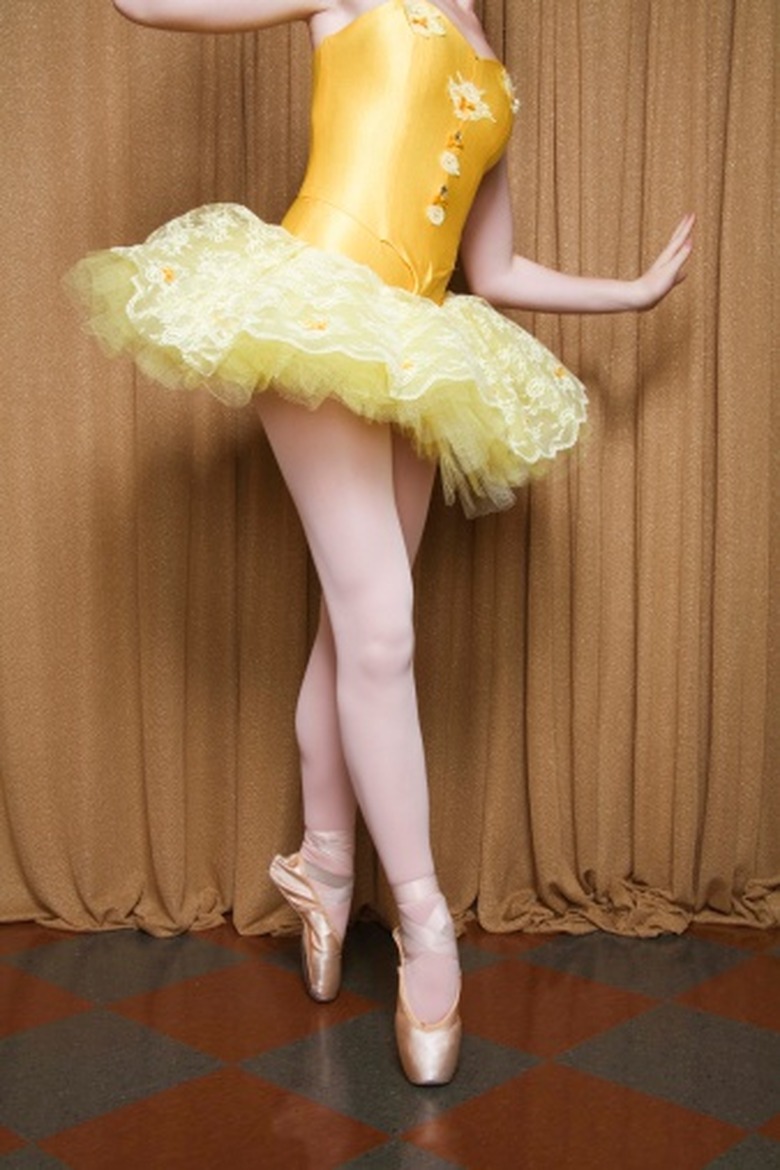Dance-Related Science Projects
Make your science fair project stand out by incorporating the art of dance into your project. Focus on the physiology of dance or the emotional effects of movement. No matter what dance-related subject you choose, present your hypothesis, research and conclusions using visual aids including DVDs, videos and photographs; or if possible a live dancer can demonstrate different movements and steps.
Dance Mechanics
Dance Mechanics
Analyze tapes of professional dancers and use a screen-capture feature to observe the angles and shapes of their bodies. You might note that the dancers who leap the highest take off from the ground at a certain angle. Test your hypothesis by asking other advanced dancers to try leaping with their bodies at different angles, then calculate the relationship between body angle and maximum leaping height. You can use a selection of video tapes of different dancers to prove your hypothesis.
Emotional Effects
Emotional Effects
Analyze the impact that dance has on emotions. If possible, ask a local dance group or company to participate in your experiment. Ask them to take a survey about their moods after performing or rehearsing different kinds of dances.
You could also examine the influence dance has on an audience. Ask sample subjects to watch a series of different dance clips, answering questions about their moods after each clip. See if there is a correlation between the kind of music played or the movement style and the moods of your test subjects.
Health Benefits
Health Benefits
Another way to focus on the physiology of dance is to analyze the physical benefits of dance. Compare the bone and muscle development of teenagers or adults who have danced most of their lives to those who have not.
Another option is to ask a group of adults of a similar age, who are about to start beginner dance classes, to take part in some physical tests of strength, flexibility and cardiovascular health. Perform identical tests before and after they take six months of dance classes to see how dancing affects their bodies.
Dance and Nutrition
Dance and Nutrition
Do a little background research on the optimal diet for dancers. Investigate how different foods affect dancers' performances by asking a volunteer dancer or two to follow different diet plans before dance classes or rehearsals. Alternate between diets that offer different proportions of carbohydrates, fat and protein. Observe the subjects as they dance and ask them to answer a few questions about their moods and energy levels. Determine which combination of nutrients lead to optimum performance levels. Be careful that each of your menus contains an adequate number of calories and be sure not to extend the study for more than a few days.
Cite This Article
MLA
Badger, Sarah. "Dance-Related Science Projects" sciencing.com, https://www.sciencing.com/dance-related-science-projects-12748754/. 15 April 2011.
APA
Badger, Sarah. (2011, April 15). Dance-Related Science Projects. sciencing.com. Retrieved from https://www.sciencing.com/dance-related-science-projects-12748754/
Chicago
Badger, Sarah. Dance-Related Science Projects last modified August 30, 2022. https://www.sciencing.com/dance-related-science-projects-12748754/
